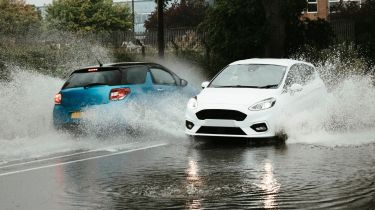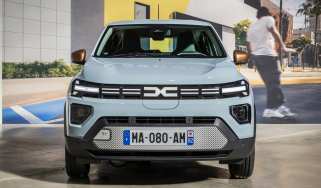How to drive in heavy rain and flood water
Heavy rain and deep flood water can be hazardous if motorists don’t take the right precautions. Here’s how to drive safely in sodden conditions

Although we’re pretty used to it in the UK, rain can conjure up some rather precarious driving conditions that can have a significant impact on visibility, stopping distances and grip – particularly when the road has been flooded. If you have no choice but to drive through heavy rain or flood water, here are our expert tips for staying safe.
Beware of your speed and grip
As soon as the road becomes wet, your grip levels are reduced, which will affect your car’s handling. To cut the risk of skidding, avoid sudden and sharp inputs of the throttle, brake and steering wheel.
It’s always wise to slow down and leave twice = the amount of space behind the car in front of you; the Highway Code instructs drivers to leave a two-second gap and it’s advisable to double this when things get wet. This is because braking distances are vastly increased, making it more difficult and leaving less time to perform an emergency stop.
Check your windows, mirrors and wiper blades
We all know that good visibility is key to safe driving, but mist, rain and fog can all make seeing where you’re going more difficult. So it’s worth making sure that your mirrors and windows are clean, because a build-up of dirt and grime can impede your view even further. It’s also important to check your wipers regularly, because blades with perished or cracked rubber won’t clear your screen.
Avoid using summer tyres in the wet
This one may sound like a no-brainer – they’re called ‘summer’ tyres for a reason. Having less tread means summer tyres give optimum grip in dry and warm conditions, but are less able to displace water, and thus provide less stability in the wet.
We recommend swapping your set of summer tyres for all-season tyres, or even winter tyres, which typically boast more tread sipes (the slits that help disperse water and bite onto the surface of the road), as well as a deeper tread depth.
How to drive in floods
Driving in floods is far from advisable – especially if you’re not behind the wheel of a made-for-purpose 4x4 kitted out with big winter tyres.
However, if you have no choice but to venture through flood water, there are a couple of things you should note before you do so.
First, try to drive in the centre of the road. The tarmac typically slopes to the sides to dissipate water, so the middle is the carriageway’s highest point and the shallowest in terms of standing water.
Secondly, we recommend that you take things as slowly as possible; go too fast and the bow waves you create can get into your engine bay and cause problems such as hydrolock – when too much water enters the engine, causing it to seize. Fast-flowing water can also lift your car off the road and carry you downstream, if too deep.
It’s always good to drive through patches of flood water one car at a time. Watching another car ford a flooded area will give you an idea of whether your vehicle may also be able to make it through. However, if you’re ever unsure, it’s always best to turn around and take an alternative route.




